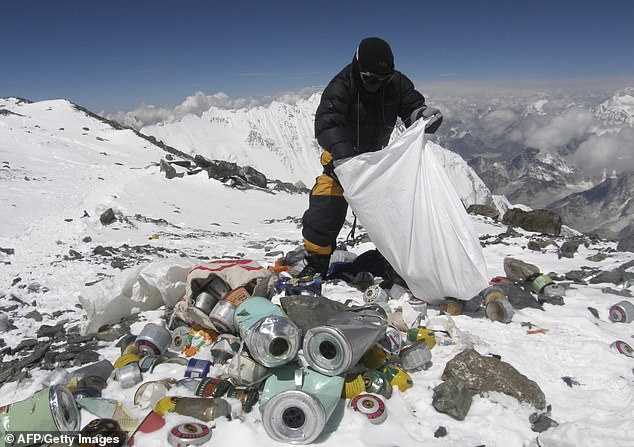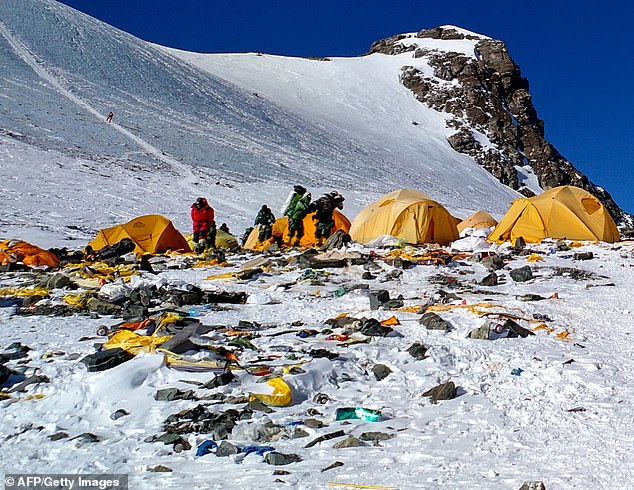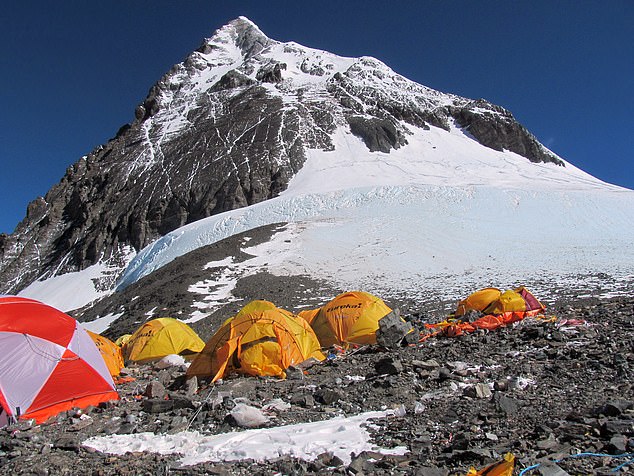Table of Contents
- Those who climb Mount Everest will have to take their excrement to base camp
- The rules come amid concerns that excrement left on Everest is not completely degrading.
It’s something that’s on many people’s wish lists.
But if you’ve always dreamed of climbing Mount Everest, the new regulations may make you reconsider.
People climbing the world’s tallest mountain will now have to bring their own poop to base camp.
The new rules come amid concerns that excrement left on Everest is not completely degrading, and some climbers are even falling ill.
“Our mountains have started to stink,” said Mingma Sherpa, president of Pasang Lhamu Rural Municipality, bbc.
It’s something that’s on many people’s wish lists. But if you’ve always dreamed of climbing Mount Everest, the new regulations may make you reconsider.

People climbing the world’s tallest mountain will now have to bring their own poop to base camp
Until now, climbers who scaled Mount Everest tended to dig holes to go to the bathroom or simply get outdoors.
However, as temperatures are known to drop to -60°C (-76°F), the excrement does not completely degrade, leaving human feces visible on the rocks.
To counter this problem, Pasang Lhamu has taken the decision to force people climbing Mount Everest and nearby Mount Lhotse to ask for excrement bags at the base camp to collect their waste.
According to the BBC, these will be “checked upon return.”
While the idea of transporting your waste may seem disgusting, poop bags are specially designed to make collection as dignified as possible.
According to the BBC, the chemicals contained in the bags not only solidify the waste, but also make it “virtually odorless.”

While the SPCC itself regularly climbs the mountain in search of trash, each of the climbers must pick up 17 pounds (8 kg) of trash they find along the way.
Each bag can be used five to six times, meaning most climbers should only need to carry two during their expedition.
According to Mingma, this is not the first time bags of excrement have been handed out to climbers.
“Mountaineers have been using these types of bags on Mount Denali (the highest peak in North America) and also in Antarctica, which is why we have been advocating their use,” he said.
Human waste is not the only problem faced on Mount Everest.
Decades of commercial mountaineering have turned Mount Everest into the world’s tallest garbage dump.
As the number of climbers on the mountain has skyrocketed, the problem of waste disposal has worsened.
The worst trash is found at Camp Two, which is 6,400 meters (21,000 feet) above sea level.
In 2013, Nepal implemented a $4,000 per team trash deposit that would be refunded if each climber brought down at least eight kilograms (18 pounds) of waste.
On the Tibetan side of the Himalayan mountain, they are required to lower the same amount and if they don’t, they are fined $100 (£75) per kilogram.
In 2017, climbers in Nepal dumped nearly 25 tons of garbage and 15 tons of human waste (the equivalent of three double-decker buses), according to the Sagarmatha Pollution Control Committee (SPCC).
However, this is only a fraction of the rubbish dumped each year, and only half of climbers carry the necessary amount, says the SPCC.
Instead, many climbers choose to forfeit their deposit, a drop in the bucket compared to the $20,000 (£15,000) – $100,000 (£75,000) they will have shelled out for the experience.

